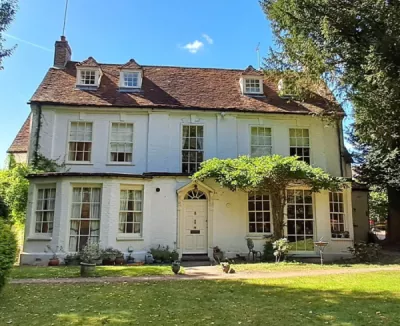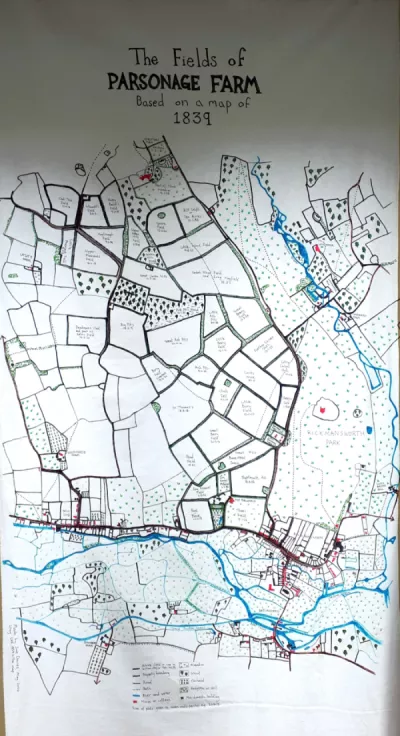A Victorian farmer and Rickmansworth's diarist
The diaries of John White of Rickmansworth

John White was born in 1813, into several generations of tenant farmers. His grandfather William had Oxhey Hall farm near what is now South Oxhey, his father William had Appletree Farm near Chorleywood Common, and John had the adjoining Parsonage Farm, on the edge of Rickmansworth from at least 1839.
None owned their own land – as was usual, they were all tenants of the landowners.
All three farmhouses still stand. The farm fields have all now been built on. Parsonage Farm house is seen below. It was referred to sometimes at Rectory Farm, but John never called it that, and nor do we.
Discover some of the stories of Mr White and his family in these pages.

This map, made up from the Tithe Map of 1839 (HALS DSA4/80/2) by Dr Sue Davies, shows the layout of the farm as John White was starting out. Later, the Metropolitan railway heading for Chorleywood and Amersham cut straight across the farm.

John White was born at Chesham Bois in 1813, the eldest son of William White (1787–1855) and grandson of William White (1762–1848). His father William was a tenant of Sir John Sebright at Wood End Farm, near Flamstead. His mother was the sister of another tenant farmer nearby, Daniel Hill, and they had married at Pinner in 1812. John was the oldest of six children, with William (1817), Susanna (1821), Mary (1824) and James (1825) following, and baby Thomas dying in 1823 in his first year of life, as was so common.
This was a family of professional farmers. John’s grandfather was tenant of Oxhey Hall Farm just outside Watford from at least 1806, when he leased it for 21 years from William Bucknall. Oxhey Hall, about five miles away from Rickmansworth, was to remain in the family for nearly another hundred years.
We know very little at present about John’s early years. In 1827 his father was compelled to publish a very grovelling public apology to Joshua Smith, the master of a school in Basing House, Rickmansworth (in which, coincidentally, our museum is now housed). Based on a letter he had received from ‘his son’, William had made libellous public statements about Mr Smith and his school which, as he later admitted in print, he would have found to be wholly untrue had he only bothered to check. We don’t know which son it was, but at that time James was only two, young William nine and John 14, so the finger rather points at John. If so, Mr Smith did rather well for John, who went on to be a prosperous farmer and local figure, erudite, socially and politically aware, and a respected teacher of fellow professionals.
At some point in the 1830s, John’s parents came to Appletree Farm at Chorleywood where they were recorded in the 1841 census and where William died in 1855. The 1839 Tithe Survey showed John as tenant of some of the fields of the Parsonage Farm close to Rickmansworth, although the 1841 census recorded him still living, married for one month to Sophia, near his parents at Chorleywood. The two farms abutted: each had its own holdings, but the two men had joint tenancy of a number of the fields between the two. John seems to have taken the tenacy of the Parsonage himself on marriage in 1841, which is when we think he started to keep his diary.
Later John rented the small Two Stones farm, on the Uxbridge road close to Parsonage. He used the cottages there to accommodate his farm foreman, a vitally important role, free of charge, and the barns as general stores, notable for manure. The foreman's wife was to do the household washing - we don't think she had her own hands in the suds, but more likely that she organised local washerwomen (of whom there were several in that area) to do it. But we really don't know.